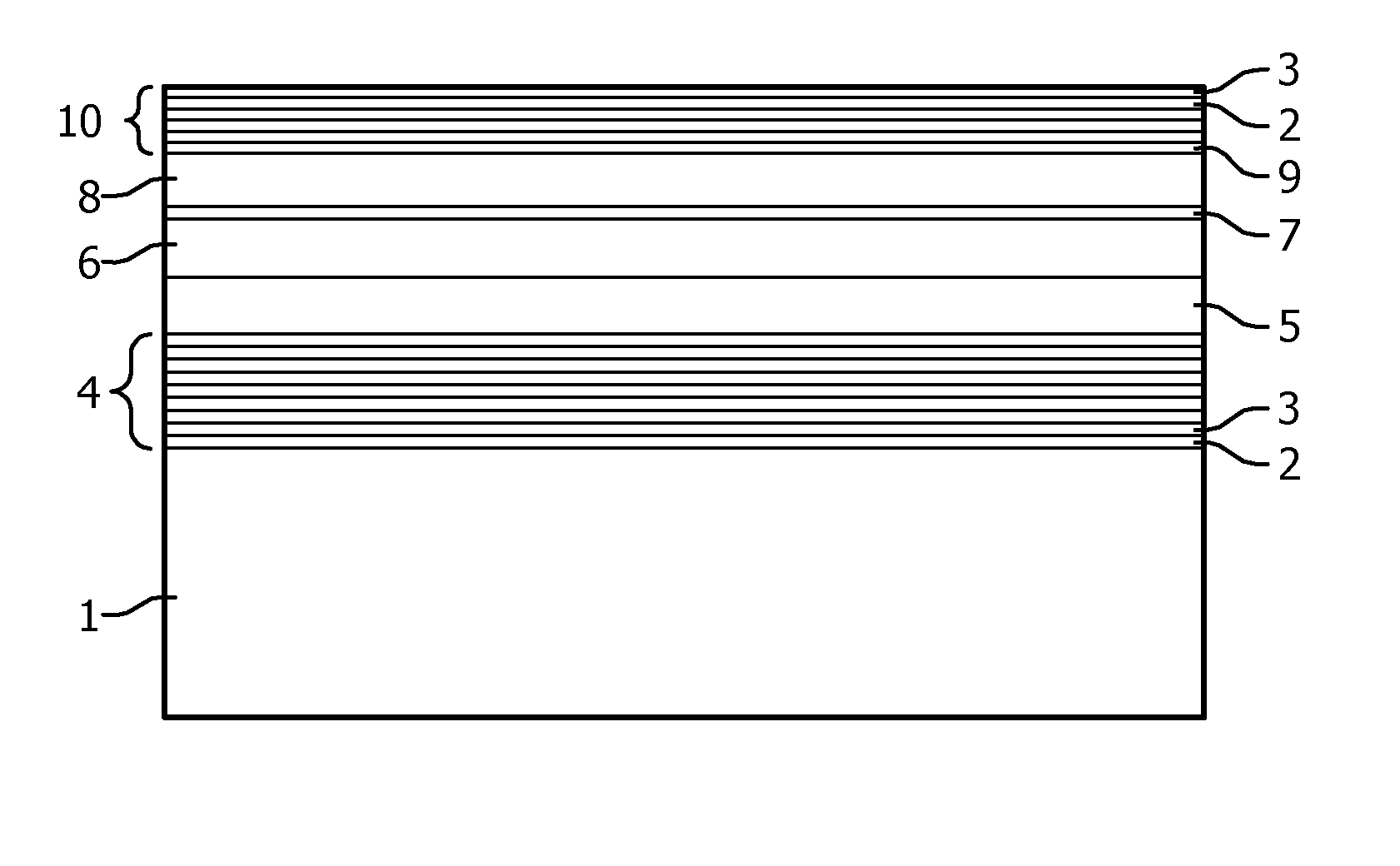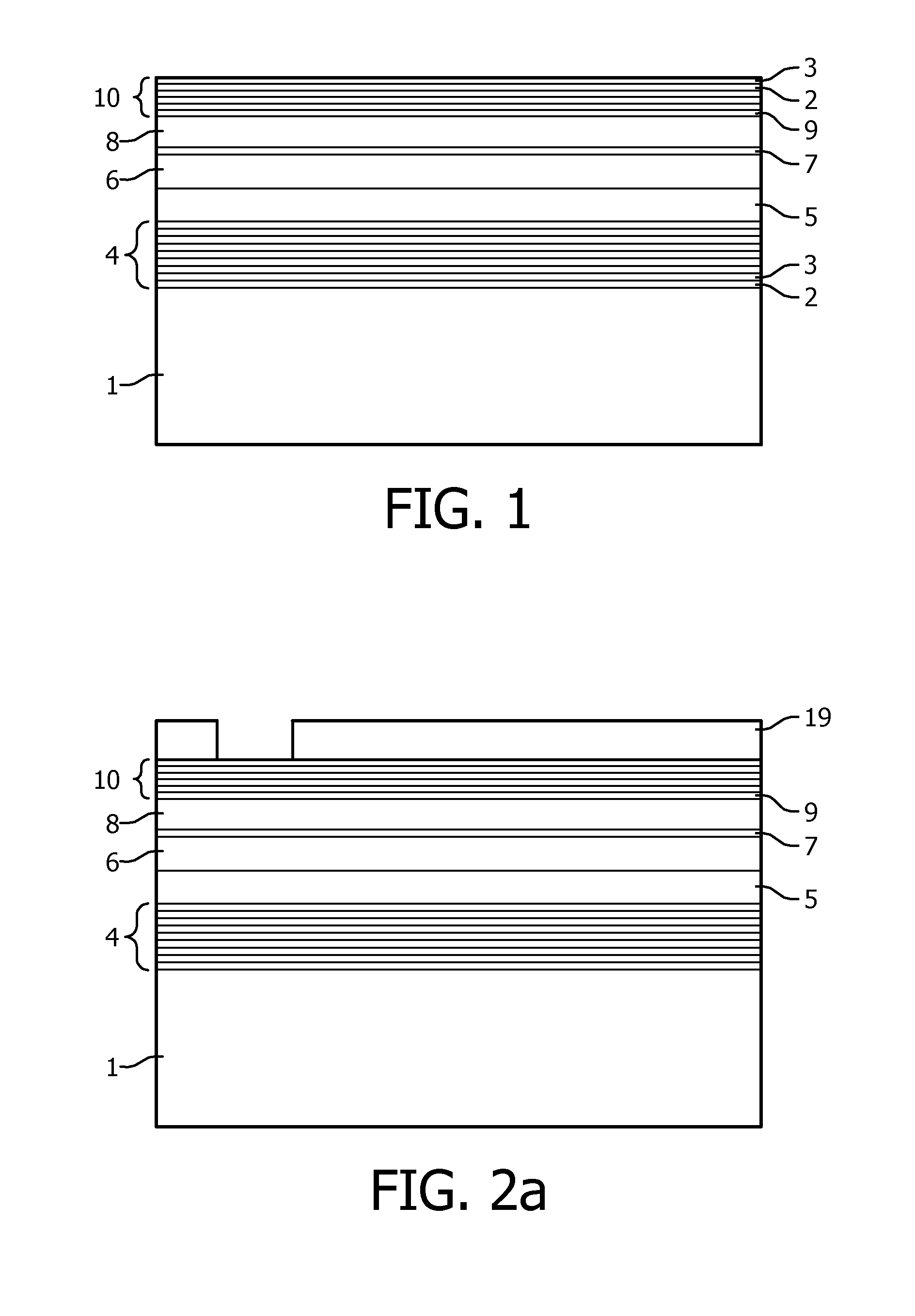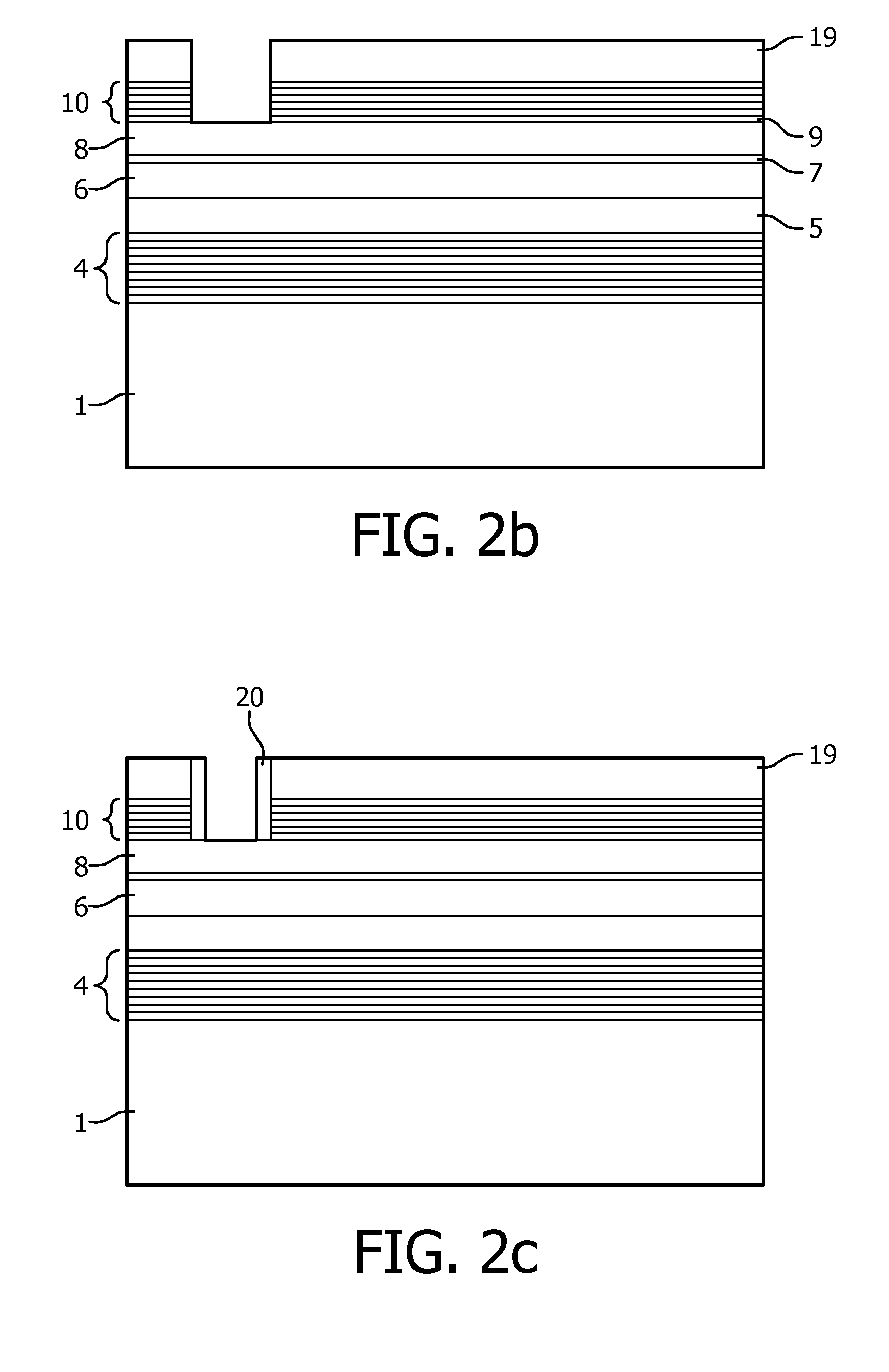Vcsel with intracavity contacts
a vcsel and intracavity technology, applied in semiconductor lasers, laser details, electrical apparatus, etc., can solve the problems of low power conversion efficiency, low production cost of vcsel arrays, difficult competition with high-power laser bars, etc., to achieve easy serial connection, safe environment, and high voltage
- Summary
- Abstract
- Description
- Claims
- Application Information
AI Technical Summary
Benefits of technology
Problems solved by technology
Method used
Image
Examples
Embodiment Construction
[0019]FIG. 1 schematically shows an example of an epitaxial layer structure for forming a proposed VCSEL as a top emitter. The epitaxial layer design starts with pairs of AlAs / Al(x)Ga(1−x)As layers (0≦x≦0.3) on a GaAs substrate 1. The combination of AlAs-layers 2 with the Al(x)Ga(1−x)As layers, for example GaAs-layers 3, gives a high contrast DBR with high reflectivity after converting the AlAs-layers 2 from AlAs to Aluminum oxide. For short wavelength VCSELs, the GaAs-layers should be exchanged by some AlGaAs-layers to avoid fundamental absorption in the mirrors. In order to achieve a high reflectivity, eight pairs of AlAs / GaAs-layers are used in this example.
[0020]On top of this bottom DBR 4 a Si-doped spacer region is arranged forming the n-current-injection layer 5. The doping profile periodically varies in the direction of the optical axis of the VCSEL which is perpendicular to the layers and substrate 1. The variation is such that higher doping concentrations are situated in m...
PUM
 Login to View More
Login to View More Abstract
Description
Claims
Application Information
 Login to View More
Login to View More - R&D
- Intellectual Property
- Life Sciences
- Materials
- Tech Scout
- Unparalleled Data Quality
- Higher Quality Content
- 60% Fewer Hallucinations
Browse by: Latest US Patents, China's latest patents, Technical Efficacy Thesaurus, Application Domain, Technology Topic, Popular Technical Reports.
© 2025 PatSnap. All rights reserved.Legal|Privacy policy|Modern Slavery Act Transparency Statement|Sitemap|About US| Contact US: help@patsnap.com



